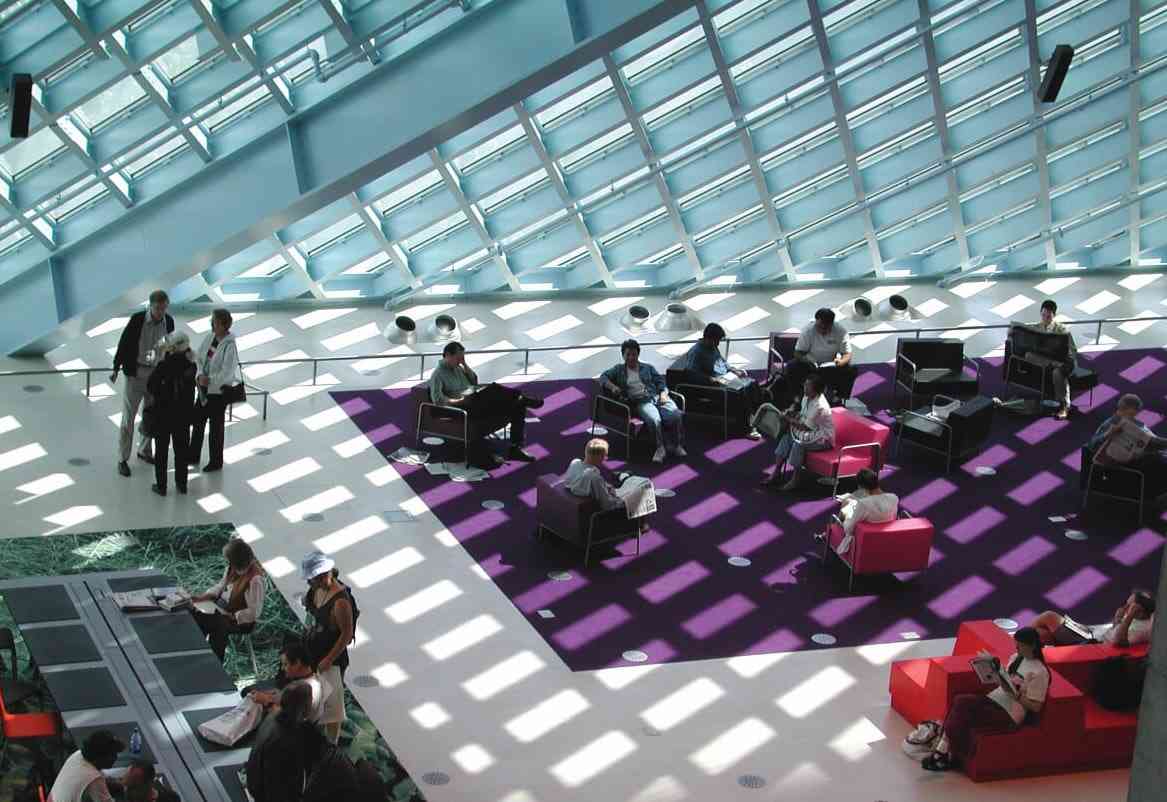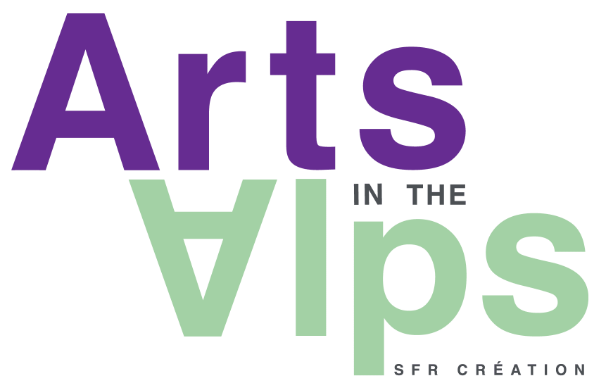Fall conferences 2018 *
Interdisciplinary discussion about Huntington's Disease: Scientific Research and Artistic Investigations
with Anne Collod, Alice Rivières, Frédéric Saudou, Sandrine Humbert

© Lika Banshoya
on Monday September 24th, 12:30pm – 2 :00 pm, Amphi MSH Alpes, Université Grenoble Alpes
In this Art & Health conference, Anne Collod, choreographer and Alice Rivières, writer, both members of the Collectif Dindingdong – Co-production Institute of Knowledge on Huntington’s disease – will lead a discussion about this disease with Frédéric Saudou and Sandrine Humbert – researchers in Grenoble Institute of Neuroscience. The speakers will present the work they are doing in relation with people affected by the disease and their relatives by highlighting the spec
Anne Collod is a dancer and choreographer. She develops a work of creation, re-enactment and pedagogy focused on the utopias of the collective. As part of Dingdingdong, she investigates Huntington’s chorea and creates choreographic portraits of people affected by the disease.
Alice Rivières writer, carries the genetic mutation responsible for Huntington’s disease. For the past 5 years, she has been “special correspondent” for Dingdingdong in Huntingtonland: she explores the community of those who, like her, are involved in this disease that transforms them body and soul.
Sandrine Humbert, Research Director at Inserm, leads a research team “Neural Progenitors and Brain Pathologies” at Grenoble Institute of Neuroscience, GIN. Frédéric Saudou, professor at Grenoble Alpes University, is director of GIN and leads the team “Intracellular dynamics and degeneration.” For more than 15 years, the 20 to 30 researchers who are part of these teams are interested in huntingtin, the mutated protein in Huntington’s disease, and how deregulation of these functions contributes to the progression of this pathology.
Confronting the present: From representation to reflexion in the Regie-work of Thomas Ostermeier
with Peter M Boenisch
on Thursday November 8th, 5:30pm – 7:30pm, Amphi IMAG, Université Grenoble Alpes
Based on my research collaboration with German theatre director Thomas Ostermeier on contemporary methods of theatre direction, my lecture will discuss the recent productions by Ostermeier as they engage with the political crisis of the present through the medium of theatre. Staging plays from the canon of dramatic classics, such as Shakespeare’s Richard III and Schnitzler’s Professor Bernhardi, but also devising new stage work based on biographical narratives – Didier Eribon’s Retour à Reims and Édouard Louis’ Histoire de la violence – the director responds to the right-wing radicalisation of society, homophobia, the crisis of the left, and the uncertainty about ‘what is to be done’ in these present times. Outlining Ostermeier’s directorial method, I shall argue that the director seeks to further extend the options of contemporary political theatre beyond the limits of representation, subversion, and deconstruction. Attempting to turn theatre into a space for deliberation, but also agonism (in the sense of Habermas and Mouffe, respectively), his productions arrive at a postrealist theatral form, based on the – surprisingly conventional, albeit notably epic – means of narration and story-telling. In particular, spectatorial desire, subjective ideological identification as well as affective involvement are employed in order to invite (or rather, command) the audience – in a purely theatral, and in Slavoj Žižek’s sense ‘interpassive’ way – to reflect on our own individual responsibility of ‘par(t)-taking’ (Rancière) in the drama of the present times. (This lecture will be delivered in English) Peter M Boenisch is a Professor of European Theatre at the Royal Central School of Speech and Drama, University of London (UK), and lives in Berlin. His research areas are theatre directing, dramaturgy, and contemporary dance, with a particular focus on the German- and Dutch-speaking countries, as well as the institutional aesthetics and politics of the European theatre system. His books include Directing Scenes and Senses: The thinking of Regie (Manchester University Press 2015), The Theatre of Thomas Ostermeier, co-authored with the German theatre director (Routledge 2016), and the volume Littlewood – Strehler – Planchon in the series The Great European Stage Directors (co-edited with Clare Finburgh, Bloomsbury Methuen 2018). He also edited the forthcoming 30th anniversary new edition of David Bradby and David Williams’s seminal study Directors’ Theatre (Macmillan 2019). With Rachel Fensham, he is series co-editor of the Palgrave book series New World Choreographies. He is also a Fellow of the Berlin-based International Research College Interweaving Performance Cultures, and co-founder of the European Theatre Research Network (ETRN).
Sculpting the Sensescape: An Embodied Approach to Design
with Barbara Erwine

on Wednesday October 16th, 6:00 pm – 8:00 pm, École nationale supérieure d’architecture de Grenoble
The relatively bland, homogeneous palette of contemporary sensory design pales by comparison to the lush and sensuous environments of antiquity. With ever-increasing technological accuracy, the places we now design and construct are controlled to narrowly acceptable ranges of light, smell, sound, texture and color, resulting in experiences that are acceptable but not inspiring, comfortable but not comforting, predictable but not memorable. This talk explores the origins of this move toward relative sensory deprivation and proposes an alternative design framework to rekindle the variety and vitality of a fully embodied sensory approach. Sculpting the sensescape into cathedrals of smell, caves of sound, alcoves of warmth, thresholds of texture, and cones of light, we will explore sensory spaces as volumetric entities that we enter and leave independent of the tectonic constructions of walls, floors, ceilings, etc. that are the traditional purview of the architect. Like their tectonic counterparts, the location, shape and boundaries of these sensory spaces can be rigid or fluid, permanent or ephemeral, solid or porous. We’ll see that although tectonic space leans toward the former of these, sensory space leans toward the latter, and thus brings with it magical qualities that may linger just below consciousness. We’ll explore the delicate balance of creating authentic and nurturing sensory environments that provide interest without overwhelming or harming occupants and evoke a sense of place/belonging without manipulation. The presentation will conclude with a discussion of how we can finally value the importance of sensory modalities in architecture and design to reinstate a celebration of the senses in our contemporary design world of education and practice. Barbara Erwine is a Seattle-based sustainable building design consultant, educator, researcher and writer. At University of Washington, Department of Architecture (Seattle, WA, USA) her teaching has focused on sensory design and passive/energy efficient approaches to resource use in buildings, celebrating the integration of the built environment with the natural world. Her consulting work applies this integrated design approach to a wide range of built environments including commercial buildings, urban neighborhoods, and public lands. Her recent book, Creating Sensory Spaces: The Architecture of the Invisible (Routledge; 2017), presents a new framework for architectural design that envisions the sensescape as volumetric, shaped sensory places that can be inhabited independent of the solid tectonic constructions that are the traditional purview of the architect. Exploring cathedrals of smell, caves of sound, alcoves of warmth, thresholds of texture, and cones of light, Erwine defines a new language of immersive experience that transforms the design process.
Practicing and talking about theater
with Jelle Koopmans
on Tuesday October 23rd, 4:30pm to 6:00pm, amphithéâtre MSH ALPES, Université Grenoble Alpes
In Pierre Grignore’s farce of Raoulet Ployart, the woman prefers (when it comes to “plowing her vine”) the character Make to the character Say. Here we will take a concrete example: the use of strophic forms, and especially the triplet, on the scene of the fifteenth and sixteenth centuries. Many intelligent, gratuitous, unfounded and plausible interpretations have been made, but no one has yet has challenged the question through practice – could it simply work as we think? As an opening to the practical, hands-on workshop where we will do a real “practice”, this conference will detail the issues, opportunities, and dangers of the very form of the workshop as a historical tool for the study of theater from Medieval and Renaissance periods, and more generally for any historical theater. The main question will be that of the relationship between speech and action, and therefore not only “when speaking is doing”, but also “when doing is speaking”. Jelle Koopmans has been working since 1989 at the University of Amsterdam, the French Department and the Institute of Culture and History. His doctoral thesis (University of Leiden, 1987) focused on the happy French sermons of the 15th and 16th centuries. Since then, he has published a number of important editions of dramatic and narrative texts as well as monographs (like The theater of the excluded in the Middle Ages, Paris, Imago, 1997). He is a member of the Royal Academy of Arts and Sciences (KNAW) and President of the Council for Human Sciences (RGW) in the Netherlands. In 2012, the city of Tours awarded him the medal of the city for his work on the French Renaissance.
More about
* Program of the associated workshops HERE
Since 2016, the SFR Création, a federative research structure, at Grenoble Alpes University organizes a cycle of international and interdisciplinary conferences, entitled Arts in the Alps Automn conferences. These conférences invite internationally renowned researchers and artists to present their most recent works adressing epistemological, poietic and methodological matters in research-creation.

